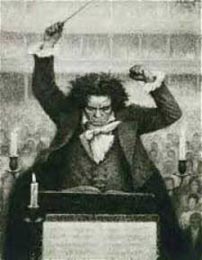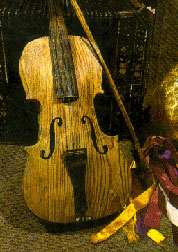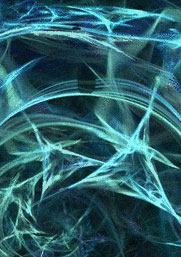FEATURED COMPOSERS
Choose from the links below to search by
RENAISSANCE 1400-1600
 The Renaissance is best described as a time of rebirth in science, learning, and the arts in Europe from approximately 1400 to the end of the 16th century. The changing of society increased the value of individualism peaking interest in literature, philosophy and art, creating a new era of intellectual curiosity. The Renaissance was a highly exploratory period of time, made easier with the invention of the compass and the printing press, which allowed for widespread distribution of knowledge. This infectious spirit manifested itself throughout the arts, first shown by greats such as Shakespeare and Michelangelo before influencing sacred and secular composers of the period.
The Renaissance is best described as a time of rebirth in science, learning, and the arts in Europe from approximately 1400 to the end of the 16th century. The changing of society increased the value of individualism peaking interest in literature, philosophy and art, creating a new era of intellectual curiosity. The Renaissance was a highly exploratory period of time, made easier with the invention of the compass and the printing press, which allowed for widespread distribution of knowledge. This infectious spirit manifested itself throughout the arts, first shown by greats such as Shakespeare and Michelangelo before influencing sacred and secular composers of the period.
The Renaissance rebirth directly influenced compositions of the era, developing new musical styles and encouraging creativity among artists. Composers continued to mold older sacred forms such as the motet and mass, while experimenting with newer secular forms bringing about national trends such as the French chanson and the ltalian madrigal.
Smoother, flowing polyphonic lines were characteristic of the Renaissance period, in which imitative counterpoint was written in four or more vocal parts or groups of like-sounding instruments called consorts. The invention of the printing press eased the spread of instrumental music for amateur musicians, encouraging composers to create dance music to be played by a larger variety of instruments, including the lute, which was the favorite choice in domestic music-making. The popularity of instrumental music led to the origination of many instruments during the Renaissance period, some surviving to the present day. By the late 16th century, composers were developing a trend towards extremely complex and chromatic works, closing the Renaissance era and preparing Europe for transition into the Baroque period.
BAROQUE 1600-1750
 The term Baroque is used to describe the stylistic characteristics of music, art, and architecture of the early 17th to mid 18th century. Derived from the Portuguese word, meaning irregularly shaped pearl, Baroque perfectly describes the greatly varying musical styles of compositions created between 1600 and 1750. Originally used to emphasize the strangeness and extravagance of art, it has only been in the present century that the term has been used to define this period of music history.
The term Baroque is used to describe the stylistic characteristics of music, art, and architecture of the early 17th to mid 18th century. Derived from the Portuguese word, meaning irregularly shaped pearl, Baroque perfectly describes the greatly varying musical styles of compositions created between 1600 and 1750. Originally used to emphasize the strangeness and extravagance of art, it has only been in the present century that the term has been used to define this period of music history.
When compared to music of the earlier ages, Baroque composers were pioneers of change, creating new, bold, compositional techniques that stand out as pivotal moments in music history. Marked by elaborate ornamentation and dissonance, composers focused on expressing the affection of human emotions such as rage, sorrow, heroism, and joy. Adapting to idiomatic writing, the focus shifted to composing for specific performers or soloists creating the first famous instrumental and vocal virtuoso’s which brought the concerto and opera forms to fame. By the mid-1600’s the orchestra had grown in popularity after its humble beginnings as the “accompanist” for concerto soloists, opera, and vocal music. Although imitative polyphony continued to remain fundamental to musical composition, the creation of the concerto and opera inspired homophonic exploration to become more common, featuring a solo melody line against an accompaniment or basso continuo. The use of chromaticism deepened from being used as a tool to express emotions early in the era, to governing harmony and developing major-minor tonality and the hierarchy of the relationships between the central triad and chords by the end of the baroque era.
CLASSICAL 1750-1825
 The Classical era in western music began in the mid 18th century as Europe began to adapt to new styles of literature, architecture, and art generally known as Classicism. In direct contrast from the Baroque period, a trend towards simplicity in music rather than complexity was the structural goal amongst composers. Public awareness of ideas in philosophy and Newton’s physics brought about this taste for well articulated and organized structural clarity in the world of music. This new period moved away from layered Baroque polyphony and towards the new style of homophony where a melody was placed over a simple harmony making the tonal structure of compositions much more obvious and audible.
The Classical era in western music began in the mid 18th century as Europe began to adapt to new styles of literature, architecture, and art generally known as Classicism. In direct contrast from the Baroque period, a trend towards simplicity in music rather than complexity was the structural goal amongst composers. Public awareness of ideas in philosophy and Newton’s physics brought about this taste for well articulated and organized structural clarity in the world of music. This new period moved away from layered Baroque polyphony and towards the new style of homophony where a melody was placed over a simple harmony making the tonal structure of compositions much more obvious and audible.
The search of intellectual freedom and the obsession of graceful but delicate structural clarity, defines the music of the classical era replacing the serious, rigid, majestic splendor of the Baroque era with a lighter, less complicated feel. Composers designed their music to be entertaining with simple, pleasing, tuneful melodies consisting of short four bar phrases that could be easily repeated between cadences. The Classical style broke away from the single emotional quality of Baroque music establishing contrast between sections and movements. Often a meaning or title was connected to a composition creating what is now known as program music. This new style used a range of techniques including the use of emotional coloring, opposition of major/minor tonality, use of harmonic modulations creating tension and release, and transitional episodes bringing occasions of wit, delight and surprise to the composition. The orchestra increased in size and range bringing a heightened importance to instrumental music. The piano also rose in popularity, becoming the favored instrument among classical composers replacing its earlier predecessor, the harpsichord, due to its ability to produce a wider range of dynamics. The popularity of instrumental music in the Classical period inspired the creation and definition of large scale compositional forms, including the sonata form, which has dominated instrumental composition to the present day.
ROMANTIC 1825-1910
 Romantic is the term applied to the period of music history from 1825-1910 where romance, creativity, and fantasy are the primary compositional techniques among composers. Abandoning the earlier Classical era strictness of rules, order, and reason, Romantic music was based upon adventure, imagination, and emotion, dominantly focusing on melody and allowing for greater compositional exploration. A time of political revolution, composers wrote “nationalistic” compositions to represent their country's histories, challenges, and politics, expressing the first signs of cultural identity and patriotism in music. Unlike earlier eras, composers relied on the patronage of the public and individuals, allowing for self employment and freedom from dependence on nobility for steady income. Past and present art became increasingly revered and appreciated for its aesthetic worth, which encouraged the development of the modern definitions, “artist” and the “fine arts”.
Romantic is the term applied to the period of music history from 1825-1910 where romance, creativity, and fantasy are the primary compositional techniques among composers. Abandoning the earlier Classical era strictness of rules, order, and reason, Romantic music was based upon adventure, imagination, and emotion, dominantly focusing on melody and allowing for greater compositional exploration. A time of political revolution, composers wrote “nationalistic” compositions to represent their country's histories, challenges, and politics, expressing the first signs of cultural identity and patriotism in music. Unlike earlier eras, composers relied on the patronage of the public and individuals, allowing for self employment and freedom from dependence on nobility for steady income. Past and present art became increasingly revered and appreciated for its aesthetic worth, which encouraged the development of the modern definitions, “artist” and the “fine arts”.
The Romantic era was a time of great change, bringing new musical techniques to fit in with current trends. Composers began to experiment with the extended use of dissonance and chromaticism and with looser and more extended musical forms, including the symphonic poem (an orchestral work that that told a story or had artistic or literary background), expressive piano miniatures (nocturnes that created a dreamy, abstract feeling), and the art song (vocal music with great emphasis on the symbolism and meaning of the text). Opera became increasingly popular, allowing composers to create elements of fantasy with plots that told the stories of individuals escaping from political oppression, and tales set in excitingly exotic locations. Experimentation with tone color was another important aspect of Romanticism, adding new instruments to the orchestra and attempting to achieve new or different sounds out of the existing instruments. Exceptionally gifted virtuoso performers such as Franz Liszt, acquired reputation of fame for their passionate and intense brilliance; allowing for violinists, pianists, and vocalists to become enormously popular. Most Romantic composers were also accomplished performers writing music that was extremely challenging to play, which supported the popularity of virtuoso soloists. The period of Romanticism approximately came to an end in 1910, however many 19th century composers later identified as musical modernists, continued to write works in the Romantic style well into the 20th century.
20TH CENTURY 1900-PRESENT
 With the creativity of the musical world evolving, the twentieth century or modern era of music is often described as a time of great rebellion and free thinking in artistic expression. Many composers possess ambivalent attitudes toward the music of the past, distancing themselves from standard practices and experimenting with new sounds and forms. Exploring uncharted territories in terms of tone and structure resulted in extreme differences between twentieth century compositions and the music of past eras. Composers abandoned former requirements and created new and interesting orchestral and compositional techniques opening the door for future experimentation by modern contemporaries.
With the creativity of the musical world evolving, the twentieth century or modern era of music is often described as a time of great rebellion and free thinking in artistic expression. Many composers possess ambivalent attitudes toward the music of the past, distancing themselves from standard practices and experimenting with new sounds and forms. Exploring uncharted territories in terms of tone and structure resulted in extreme differences between twentieth century compositions and the music of past eras. Composers abandoned former requirements and created new and interesting orchestral and compositional techniques opening the door for future experimentation by modern contemporaries.
The diverse compositions of the modern era spawned the use of new musical styles and forms such as impressionism amongst composers. Inspired from the visually charming works of art by Monet, impressionistic composers such as Debussy rejected the rules of tonality, using dissonance while creating dreamlike music that was pleasing to audiences. Other composers of the era were influenced by the music of the 18th century, motivating Neoclassical works during the twentieth century. Perhaps one of the most famous examples of twentieth century music is the atonal, twelve tone music of Arthur Schoenberg. Abolishing previous ideas of tonality, Schoenberg developed the twelve-tone system, eliminating the idea of tonal center and assigning equal importance to each of the twelve notes in an octave. The twelve notes were placed in a specific “tone row” or order to be used without repetition evoking an anxious and unresolved musical atmosphere. Phenomenal changes in science and technology opened the door for further exploration into the creation of modern musical invention. Non-western musical ideas such as combining instruments in unheard of ways, writing instrumental parts with extended performance practices, replacing standard accompaniment with recorded material, and utilizing computer technology to create electronic sounds are some prevalent compositional tools of the modern period. Ideological changes and technical advances in music affected not only the way music is enjoyed, but also allowed audiences to listen to compositions in an entirely new way. The acceptance of different cultures and music from different parts of the world produced a melting pot of individual preference, paving the way for future artistic experimentation.
t7t3l0uhl8|0010C39D6D07|DetailContent|contenttext|1BFCEB59-FD8F-4D5C-BCE3-CC55F7D57665
<